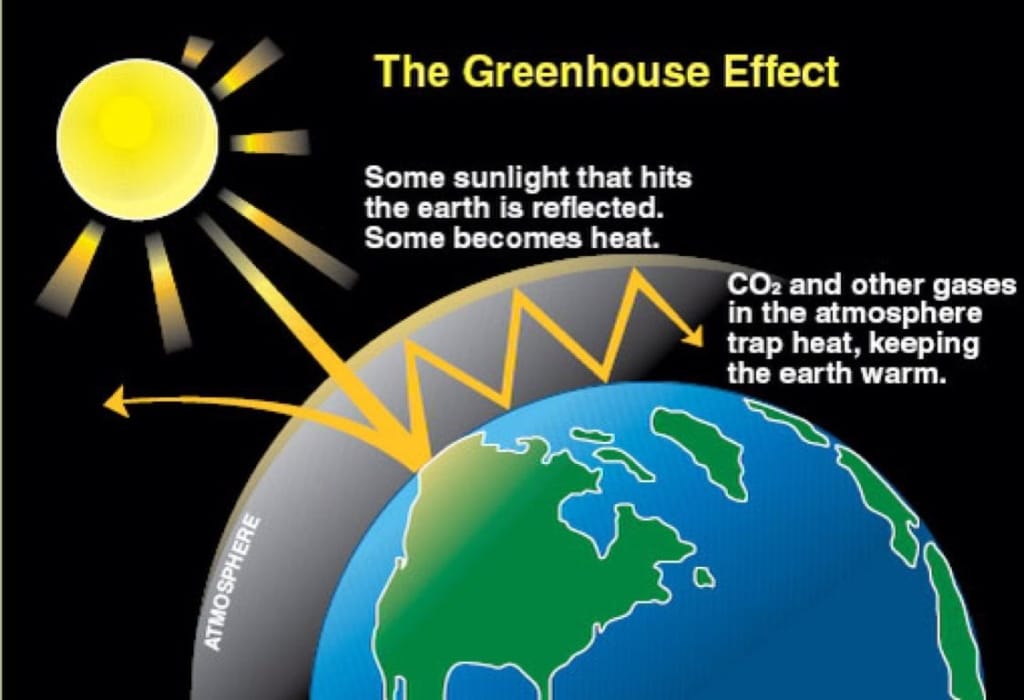Understanding the Greenhouse Effect: The Mechanisms of a Natural Phenomenon
The greenhouse effect is a natural occurrence essential for sustaining life on Earth. It refers to the process by which certain gases in the atmosphere trap heat from the sun, keeping our planet warm enough to support various ecosystems. However, the effectiveness of the greenhouse effect hinges on specific conditions, and when these conditions align, the phenomenon can have profound implications for climate and weather patterns.
To grasp when and how the greenhouse effect occurs, we must delve into the fundamental components that contribute to this critical thermal regulation of our planet.
The Role of Greenhouse Gases in the Atmosphere
Greenhouse gases (GHGs) are the key players in the greenhouse effect. Predominant among these are carbon dioxide (CO2), methane (CH4), nitrous oxide (N2O), and water vapor (H2O). Each of these gases has unique properties and varying degrees of effectiveness in trapping heat. For instance, water vapor is naturally abundant and enhances the greenhouse effect, while carbon dioxide, albeit less effective per molecule, is significant due to its higher concentration and long atmospheric lifetime.
The presence of these gases in the atmosphere is crucial. When solar radiation reaches Earth, some energy is absorbed by the surface, warming it. This energy is then re-radiated as infrared radiation. Greenhouse gases absorb this re-emitted radiation, leading to a warming effect. Therefore, the conditions necessary for the greenhouse effect to operate effectively include a sufficient concentration of greenhouse gases, particularly in the lower atmosphere.
Seasonal and Diurnal Variations in Greenhouse Gas Concentrations
Interestingly, the greenhouse effect is not a static phenomenon. It fluctuates based on several temporal factors, including seasonal changes and the time of day. During summer months, vegetation is often denser and more active in photosynthesis, leading to increased oxygen levels and a temporary decrease in atmospheric CO2 concentrations. Conversely, in the winter, less plant activity results in higher CO2 levels. These seasonal variations can shape local climates and impact the overall greenhouse effect in various regions.
Additionally, daily fluctuations play a role. During the day, solar radiation increases, resulting in heightened temperatures. Nighttime cooling leads to a drop in surface temperatures. However, if the atmosphere contains a significant concentration of greenhouse gases, the heat captured during the day will be retained longer, minimizing temperature drops at night. This diurnal variation further illustrates the dependency of the greenhouse effect on atmospheric conditions.
Geographical Influences on the Greenhouse Effect
Geography is another critical factor that influences when the greenhouse effect occurs. Areas with dense vegetation, such as tropical rainforests, tend to have higher humidity and moisture content in the atmosphere, which amplifies the greenhouse effect. In contrast, arid regions with low vegetation and humidity exhibit a more pronounced diurnal temperature range because they lack sufficient greenhouse gases to moderate temperature changes.
Moreover, urbanization has transformed many landscapes, leading to the phenomenon known as the urban heat island effect. Urban areas typically have higher concentrations of greenhouse gases and heat-absorbing surfaces, resulting in localized warming. Understanding these geographical distinctions can shed light on where the greenhouse effect is most active and its implications for climate adaptation and mitigation strategies.
Human Activity and Amplifying Factors
While the greenhouse effect is a natural phenomenon, human activities have significantly amplified its intensity since the industrial revolution. The burning of fossil fuels, deforestation, and industrial agriculture have led to unprecedented increases in greenhouse gas concentrations. These changes can disrupt the balance of natural systems and contribute to climate change, leading to erratic weather patterns, rising sea levels, and ecological disruptions.
Efforts to address these human-induced factors can limit the detrimental effects of the greenhouse effect. Transitioning to renewable energy sources, implementing carbon capture technologies, and promoting sustainable land use practices are critical steps towards mitigating the rapid changes fueled by excess greenhouse gases.
The Future of the Greenhouse Effect: Navigating Climate Implications
Looking ahead, understanding the conditions that foster the greenhouse effect is essential for developing effective climate policies. Continued monitoring of greenhouse gas levels, especially in relation to seasonal and geographical changes, will be vital. As scientists and policymakers strive to combat climate change, integrating knowledge about the greenhouse effect’s mechanisms can guide sustainable practices and climate resilience.
In conclusion, the greenhouse effect is an intrinsic component of our planet’s climate system. By identifying the conditions under which it operates effectively, including the roles of greenhouse gases, seasonal variations, geographical influences, and human activities, we gain a comprehensive understanding of its implications. This awareness is essential for fostering a sustainable future amidst the challenges of climate change, ensuring that we, and future generations, can thrive on this planet.

